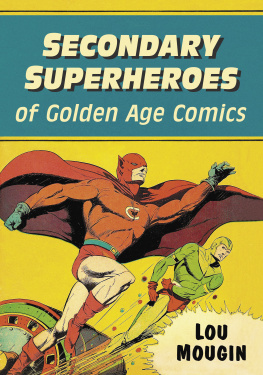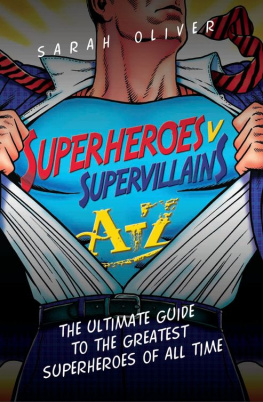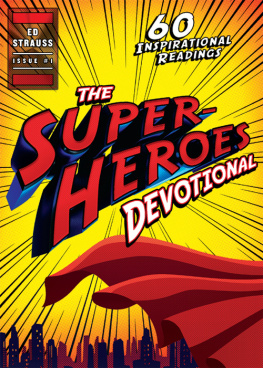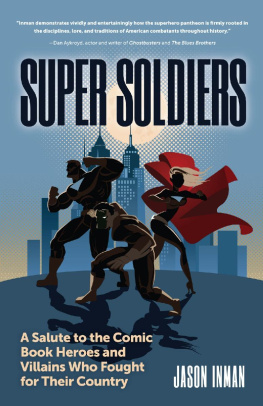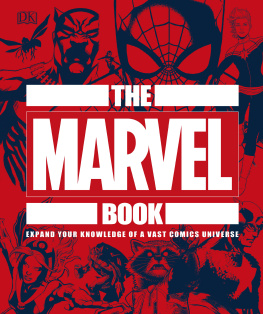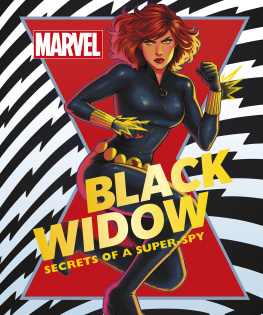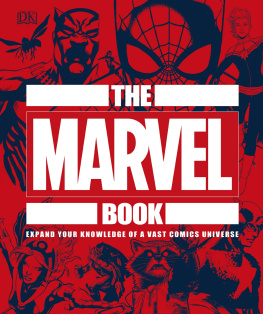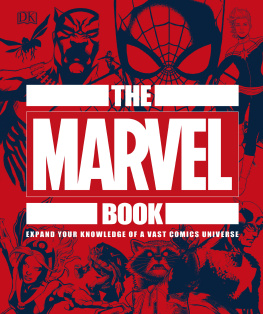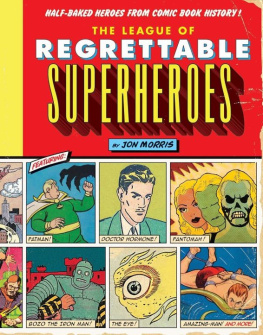
Secondary Superheroes of Golden Age Comics
LOU MOUGIN

McFarland & Company, Inc., Publishers
Jefferson, North Carolina
LIBRARY OF CONGRESS CATALOGUING DATA ARE AVAILABLE
BRITISH LIBRARY CATALOGUING DATA ARE AVAILABLE
e-ISBN: 978-1-4766-3860-7
LIBRARY OF CONGRESS Control Number 2019051433
2020 Lou Mougin. All rights reserved
No part of this book may be reproduced or transmitted in any form or by any means, electronic or mechanical, including photocopying or recording, or by any information storage and retrieval system, without permission in writing from the publisher.
The front cover illustration is from Cat-Man Comics, No. 8, March 1942 (Holyoke Publishing)
McFarland & Company, Inc., Publishers
Box 611, Jefferson, North Carolina 28640
www.mcfarlandpub.com
Acknowledgments
Besides the folks I mention in the introduction, Ill cite old friends Roy Thomas and Jim Steranko, editor-friend Tommy Hancock, historians Jules Feiffer, Mike Benton, Ron Goulart, Ray Miller, Gerard Jones, and more article writers than I could possibly name. Also Steve Bissette, whos been a constant help and mentor. I also gratefully recommend the Grand Comics database (www.comics.org) for more information about comics of all eras than one could imagine possible. Most of the illustrations here came from books scanned and posted at the digital Comic Museum (digitalcomicmuseum.com) a must for all online Golden Age fans.
Introduction
Most likely, youve read superhero comics.
Maybe you started out with Spider-Man and the Fantastic Four. Perhaps it was Superman and Batman. If you came in later, you might have begun with Spawn and Savage Dragon. But since youve picked up this book, you probably read and liked the ultrapowered gladiators in all their four-color fury. I did, too.
But where did they all come from?
Thats a point of much debate. Theyve been tracked back through the pulp heroes of the 1930s, comic strip heroes like Flash Gordon, Phantom, and Mandrake, masked avengers such as Zorro and the Scarlet Pimpernel. You can even make a case for the ancient man-god Gilgamesh, and some have. Prototypes abound, as in all things.
For our purposes, well place the genesis of the superhero at Action Comics #1 (May 1938), the debut of Superman. DC Comics took a chance on a guy in a blue, red, and yellow costume strong enough to lift a car in his bare hands and demolish it. He did that on the cover.
Kids bought it, devoured it, clamored for more. In a year, Superman had his own comic. During that same year, Batman debuted in Detective Comics #27 (May 1939). A year later, Batman #1 premiered. Within a very short time, superheroes were all over the comic racks: Captain Marvel, Wonder Woman, the Human Torch, Sub-Mariner, Captain America, Spy Smasher, Doll Man, Blackhawk, Uncle Sam, Green Lantern, the Flash, the Spectre, Dr. Fate, and the entire Justice Society of America.
Guess what?
This book isnt about them.
The characters of DC, Marvel, Fawcett, and Quality comics have been covered thoroughly enough in a plethora of history books. My faves include both volumes of TheSteranko History of Comics and Jules Feiffers Great Comic Book Heroes. Throw in Gerard Joness Men of Tomorrow and youll have a good picture of the behind-the-scenes workings of 1940s comics. Read those, and youll have an education.
Almost.
Because a lot of superheroes and jungle lords and ladies and spacemen and adventurers of that time have just not been covered in the same depth and with the same attention to detail. We speak of the Shield, the Black Terror, the Black Hood, the Blue Beetle, the first Daredevil, Crimebuster, Amazing-Man, the Green Lama, Frankenstein, Hydroman, Pyroman, Skyman, the Flame, Steel Sterling, Supersnipe, and a whole army of others.
Some historians covered one, or two, or a small group of them. But nobody covered all of them in depth. I kept waiting for somebody to write the book on them.
Nobody did.
Over time, the rare and costly comics of the Golden Age (1938 to somewhere in the early 1950s) became a little more accessible. First, in fiche form; later as computer-scanned copies available online. (Check the Digital Comics Museum and Comic Book Plus for the two best download sites.) I collected these comics in non-comics form, read them, indexed them, and analyzed them.
Bit by bit, it became more possible to construct a history of the Golden Ages other players.
Still I waited. But I got tired of waiting.
If nobody else was gonna write the book, I would.
Now, one caveat: I will admit this book does not contain a whole lot of biographical information on the artists and writers and publishers who brought forth the superheroes of the 1940s. Most of the mighty men of the Golden AgeSiegel, Shuster, Kane, Kirby, Fox, Eisner, Fine, and all the restare dead. Back in the late 80s and early 90s, I tried to interview as many Golden and Silver Age pros as I could, because I knew they wouldnt have their stories told if nobody wrote them down.
I tried. Sometimes I succeeded. More than once, the pro I interviewed passed on shortly after the interview was published. Once, I had to rework an intro into a requiem. But there were many of them, and only one of me, and I couldnt get them all. Few of them remain today. Stan Lee was a young man back then. Now hes dead.
So, rather than trying to shoehorn in creator bios, Ive concentrated mostly on the comics and the heroes themselves. Others can do a better job of chronicling the lives of writers and artists. Let them do it. I can write about the characters, and thats what Ive done.
I didnt know a helluva lot about the Golden Age of Comics in the Sixties before I read the histories by Feiffer and Steranko. Captain Marvel had passed a year before I was born. I knew about the Justice League, the Avengers, the Fantastic Four, the Legion of Super-Heroes, and all the rest of the Sixties stars. Theyre my personal pantheon.
But contemporary comics always referenced their first heroic era. The Justice Society of the 1940s teamed up with their 1960s counterparts, the Justice League, for two issues (usually) every year. Sub-Mariner and Captain America returned to Marvel in 1962 and 1964, respectively. Archie Comics dusted off a ton of their old heroes, formed some of them into the Mighty Crusaders and various hangers-on, and made us aware of them. As for Superman, Superboy, Batman, Wonder Woman, the Blackhawks, Green Arrow, and Aquaman, they never left.
Those, and the reprints that began circa 1965, teased us with a past era.
I was too curious for my own good. A big batch of comics fanzines ran articles on the heroes of the Forties, and I read all I could get my hands on. Even if I didnt know everything that was published during the World War II era and beyond, I had a great working knowledge of it.
With the help of a bunch of scanners and a bunch of downloads, I had the material to put together this book.
Actually, I had material enough for another book, covering adventure heroes and heroines who didnt fit into the superhero mode. Jungle, science fiction, and straight adventure heroes would be the core of the book. If the response to this volume is good enough, who knows?
Meanwhile, enjoy this book. Im confident you will.
NOTE: Ive tried to keep up with the various attempts to revive these characters, but many of them appear to be in the public domain. As such, they prove irresistible targets for small or start-up publishers, and new character revivals seem to show up each month. My apologies if Ive missed a few attempts to bring them out of the mothballs, or if others have shown up since this book was published.
Next page
